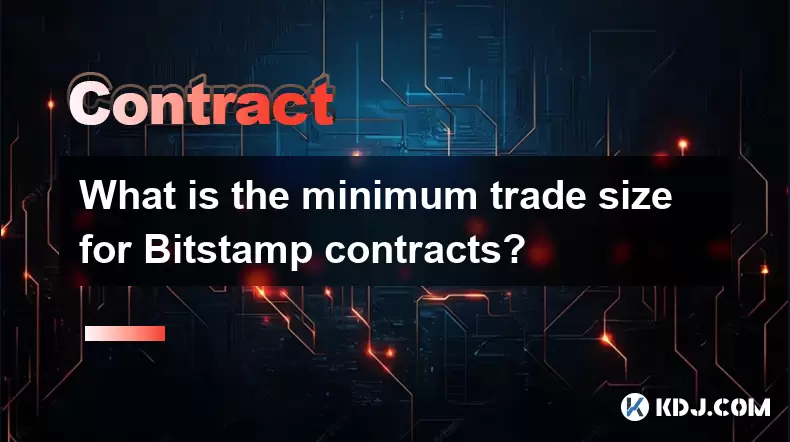-
 Bitcoin
Bitcoin $117800
-0.93% -
 Ethereum
Ethereum $3595
-3.74% -
 XRP
XRP $3.255
-7.56% -
 Tether USDt
Tether USDt $1.000
0.00% -
 BNB
BNB $769.8
-0.05% -
 Solana
Solana $190.0
-6.65% -
 USDC
USDC $0.9999
0.01% -
 Dogecoin
Dogecoin $0.2449
-8.56% -
 TRON
TRON $0.3107
-1.02% -
 Cardano
Cardano $0.8207
-7.05% -
 Hyperliquid
Hyperliquid $42.90
-3.57% -
 Stellar
Stellar $0.4320
-7.31% -
 Sui
Sui $3.746
-4.91% -
 Chainlink
Chainlink $18.13
-6.70% -
 Hedera
Hedera $0.2495
-8.65% -
 Bitcoin Cash
Bitcoin Cash $510.6
-2.01% -
 Avalanche
Avalanche $23.94
-3.95% -
 Litecoin
Litecoin $113.6
-2.15% -
 Shiba Inu
Shiba Inu $0.00001405
-7.72% -
 UNUS SED LEO
UNUS SED LEO $8.967
-0.02% -
 Toncoin
Toncoin $3.165
-9.97% -
 Polkadot
Polkadot $4.180
-5.51% -
 Ethena USDe
Ethena USDe $1.001
-0.01% -
 Uniswap
Uniswap $10.07
-4.95% -
 Monero
Monero $320.9
-1.30% -
 Pepe
Pepe $0.00001299
-6.17% -
 Bitget Token
Bitget Token $4.648
-3.05% -
 Dai
Dai $0.9999
0.01% -
 Aave
Aave $290.4
-5.24% -
 Bittensor
Bittensor $432.1
-3.82%
Best strategies for Bybit futures
Bybit offers inverse and linear futures, with key differences in denomination, P&L calculation, and risk—always confirm contract type before trading.
Jul 23, 2025 at 01:56 pm

Understanding Bybit Futures Contracts
Bybit offers both inverse and linear futures contracts, each catering to different trader preferences. Inverse futures are denominated in cryptocurrency (e.g., BTCUSD), while linear futures use stablecoins like USDT (e.g., BTCUSDT). Traders must understand this distinction because it affects profit/loss calculations, margin requirements, and risk exposure. For example, in inverse contracts, gains in BTC terms may appear smaller due to BTC price fluctuations, whereas linear contracts provide stablecoin clarity. Always check the contract type before entering a trade—this prevents unexpected slippage or margin issues.
Choosing the Right Leverage
Leverage amplifies both gains and losses, making it one of the most critical decisions in Bybit futures trading. Bybit allows up to 100x leverage, but using such high leverage is risky for inexperienced traders. Instead, start with 5x to 10x if you're new. Adjust leverage dynamically based on market volatility—lower it during high volatility (e.g., news events) and increase cautiously during stable trends. To change leverage on Bybit:
- Navigate to the trading interface
- Click the leverage slider or input field
- Select your desired level
- Confirm the change in the pop-up window
This process must be repeated for each position if you're running multiple trades.Implementing Stop-Loss and Take-Profit Orders
Bybit allows both stop-loss and take-profit orders to automate risk management. These are essential for preserving capital and locking in profits without constant monitoring. When setting a stop-loss: - Right-click the order book or use the order panel
- Enter the price level where you want to exit if the market moves against you
- Choose between "Market" or "Limit" execution
For take-profit: - Set a price target above (long) or below (short) your entry
- Use "Limit" to avoid slippage on smaller positions
These orders remain active until triggered or canceled—even if you log out of Bybit.Using Technical Indicators for Entry and Exit Signals
Bybit integrates TradingView charts, enabling traders to apply technical indicators directly. Popular strategies include: - RSI (Relative Strength Index): Use 30/70 thresholds to spot overbought or oversold conditions
- Bollinger Bands: Look for price touching upper/lower bands as potential reversal signals
- MACD: Watch for crossovers between the MACD line and signal line for momentum shifts
To add these on Bybit: - Click the "Indicators" button on the chart
- Search for the desired tool (e.g., RSI)
- Customize parameters (e.g., period length)
- Apply to chart
Combine at least two indicators to reduce false signals—e.g., RSI divergence + Bollinger Band touch.Managing Position Size Based on Risk Tolerance
Never risk more than 1–2% of your total account balance on a single trade. This rule minimizes the impact of losing streaks. To calculate position size: - Determine your maximum risk in USD (e.g., 1% of $10,000 = $100)
- Identify your stop-loss distance in price (e.g., $100 from entry)
- Divide risk amount by stop-loss distance: $100 / $100 = 1 contract
Bybit displays position size in USD or contracts depending on the pair. Always verify the size before confirming the order—it’s easy to misread when trading high-leverage pairs.Monitoring Funding Rates for Cost Efficiency
Funding rates are periodic payments between long and short holders, occurring every 8 hours on Bybit. Positive funding means longs pay shorts; negative means the reverse. High funding rates can erode profits over time, especially in sideways markets. To check funding rates: - Scroll to the bottom of the futures trading page
- View the "Funding Rate" section
- Compare across pairs to find cost-efficient trades
Avoid holding positions through funding times (00:00, 08:00, 16:00 UTC) unless the trend strongly supports your direction.Frequently Asked Questions
How do I switch between cross and isolated margin on Bybit?
Click the margin mode button next to the leverage slider. Select "Cross" to use your entire wallet balance as margin, or "Isolated" to allocate a fixed amount per position. Isolated is safer for beginners—it limits loss to the allocated margin.Can I trade Bybit futures with a mobile app?
Yes. The Bybit mobile app supports all futures features: placing orders, setting stop-loss/take-profit, adjusting leverage, and viewing charts. Tap the three-line menu, select "Derivatives," then choose your contract.What happens if my position gets liquidated?
Bybit uses an Auto-Deleveraging System (ADL) if the insurance fund is exhausted. Your position is closed at the bankruptcy price, and remaining losses may be covered by other traders' positions. You’ll receive a notification and can review the liquidation in your order history.Does Bybit offer copy trading for futures?
Yes. Navigate to the "Copy Trading" tab, select a proven trader, and set your allocation. You can mirror their futures trades automatically—ideal for learning strategies from experienced users. Adjust your risk settings to match your tolerance.
Disclaimer:info@kdj.com
The information provided is not trading advice. kdj.com does not assume any responsibility for any investments made based on the information provided in this article. Cryptocurrencies are highly volatile and it is highly recommended that you invest with caution after thorough research!
If you believe that the content used on this website infringes your copyright, please contact us immediately (info@kdj.com) and we will delete it promptly.
- H100 Group's Bitcoin Bet: A Bold Move into Cryptocurrency's Future
- 2025-07-24 00:30:13
- EFSANE: Pioneering the Future of the Crypto Ecosystem as an Investment Platform
- 2025-07-24 00:30:13
- Pepe Dollar, Bitcoin Whales, and the BTC Rally: A New Era of Crypto Fortunes?
- 2025-07-24 01:10:13
- Sui Price, Open Interest, and the $4 Breakout: Will SUI Surge?
- 2025-07-23 22:50:13
- BlockDAG, XRP, and DOT: Riding the Crypto Wave Like a Wall Street Pro
- 2025-07-23 23:10:13
- Dogecoin, Hedera, and PayFi: Altcoins Heating Up in 2025
- 2025-07-23 23:50:12
Related knowledge

Why is my Bitstamp futures position being liquidated?
Jul 23,2025 at 11:08am
Understanding Futures Liquidation on BitstampFutures trading on Bitstamp involves borrowing funds to open leveraged positions, which amplifies both po...

Does Bitstamp offer inverse contracts?
Jul 23,2025 at 01:28pm
Understanding Inverse Contracts in Cryptocurrency TradingIn the realm of cryptocurrency derivatives, inverse contracts are a specific type of futures ...

How to find your Bitstamp futures trade history?
Jul 23,2025 at 08:07am
Understanding Bitstamp and Futures Trading AvailabilityAs of the current state of Bitstamp’s service offerings, it is critical to clarify that Bitstam...

Can I use a trailing stop on Bitstamp futures?
Jul 23,2025 at 01:42pm
Understanding Trailing Stops in Cryptocurrency TradingA trailing stop is a dynamic type of stop-loss order that adjusts automatically as the price of ...

What is the minimum trade size for Bitstamp contracts?
Jul 23,2025 at 07:14pm
Understanding Bitstamp and Its Contract OfferingsBitstamp is one of the longest-standing cryptocurrency exchanges, established in 2011, and known for ...

How to trade ETH perpetuals on Bitstamp?
Jul 23,2025 at 03:28am
Understanding ETH Perpetual ContractsETH perpetual contracts are derivative products that allow traders to speculate on the price of Ethereum without ...

Why is my Bitstamp futures position being liquidated?
Jul 23,2025 at 11:08am
Understanding Futures Liquidation on BitstampFutures trading on Bitstamp involves borrowing funds to open leveraged positions, which amplifies both po...

Does Bitstamp offer inverse contracts?
Jul 23,2025 at 01:28pm
Understanding Inverse Contracts in Cryptocurrency TradingIn the realm of cryptocurrency derivatives, inverse contracts are a specific type of futures ...

How to find your Bitstamp futures trade history?
Jul 23,2025 at 08:07am
Understanding Bitstamp and Futures Trading AvailabilityAs of the current state of Bitstamp’s service offerings, it is critical to clarify that Bitstam...

Can I use a trailing stop on Bitstamp futures?
Jul 23,2025 at 01:42pm
Understanding Trailing Stops in Cryptocurrency TradingA trailing stop is a dynamic type of stop-loss order that adjusts automatically as the price of ...

What is the minimum trade size for Bitstamp contracts?
Jul 23,2025 at 07:14pm
Understanding Bitstamp and Its Contract OfferingsBitstamp is one of the longest-standing cryptocurrency exchanges, established in 2011, and known for ...

How to trade ETH perpetuals on Bitstamp?
Jul 23,2025 at 03:28am
Understanding ETH Perpetual ContractsETH perpetual contracts are derivative products that allow traders to speculate on the price of Ethereum without ...
See all articles

























































































